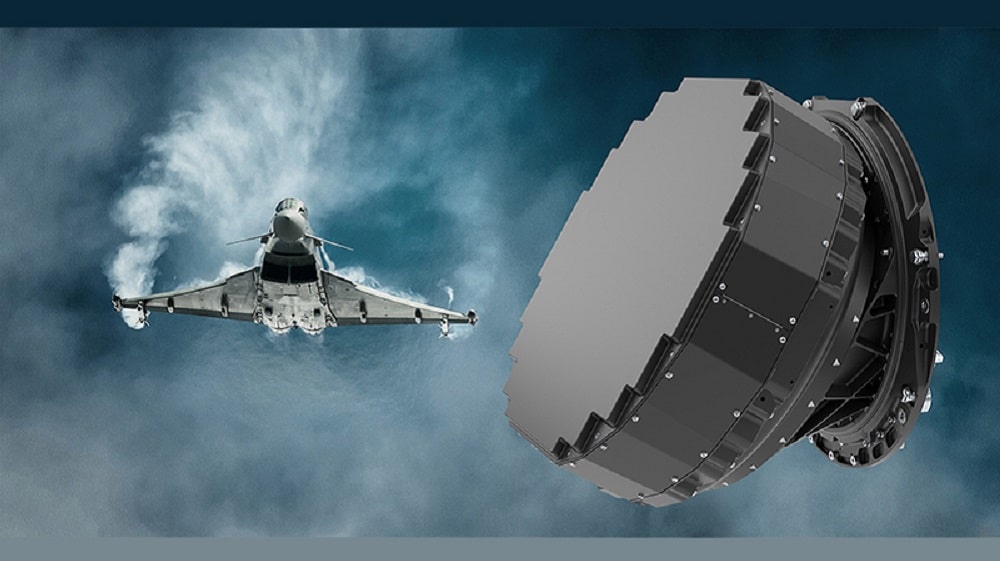PAF to Unveil Locally Made Stealth Radars for Fighter Jets
By
Haroon Hayder | Published Mar 24, 2022 | 1:39 pm
Pakistan is expected to unveil an indigenously developed Active Electronically Scanned Array (AESA) radar which will be deployed in both ground-based and airborne roles.
AESA is a second-generation phased radar in which radio waves of multiple frequencies can be sent in different directions without moving the antenna. AESA radars allow aircraft and ships to send powerful signals while remaining stealthy and resistant to jamming.
ALSO READ
Instagram is Bringing Back an Old Fan Favorite Feature
According to details, Pakistan’s local AESA radar is being developed by the Air Weapon Complex (AWC), an R&D facility of the Pakistan Air Force (PAF), in collaboration with the National University of Science and Technology (NUST).
Although complete details of the radar are unavailable at the moment, sources have claimed that the indigenously developed AESA radar will use the latest gallium nitride (GaN) transmit and receive modules that are owned by only a few countries.
AWC reportedly designed two types of GaN transmit and receive modules- S-band and X-band- in late 2019 and early 2020 respectively.
ALSO READ
Hafeez Reveals Pakistan’s Biggest Positive From Australia Test Series
Both modules have different functionalities. The S-band module is used in ground-based and airborne search radars for target search and detection. On the other hand, the X-band module is associated with fire control due to its superior resolution.
The indigenous AESA radar is expected to officially make its debut in the JF-17 Block 4 fighter jet or the fifth-generation stealth fighter jet being developed under Project Azm.
Pakistan moves ahead with domestic AESA radar development
23rd March 2022 - 07:37 GMT | by
Arslan Khan in Islamabad
RSS
Future Pakistani JF-17 fighters could benefit from indigenous AESA radars in the future. (Gordon Arthur)
Pakistan is quietly developing AESA radars for potential applications in ground-based and airborne roles.
Pakistan’s Air Weapons Complex, in partnership with the National University of Sciences & Technology and Pakistani private-sector firms, is in the final stages of the development of ground-based phased-array radars.
Though the designation of these systems is unclear, it is known that the radars use the latest gallium nitride (GaN) transmit and receive modules. While GaN-based modules are not something new, only a handful of countries are in the club to have designed these.
It is known that these modules were delivered in late 2019/early 2020 to design houses for prototyping. Two types of modules were designed, S-band and X-band.
Already have an account? Log in
Want to keep reading this article?
Pakistan is quietly developing AESA radars for potential applications in ground-based and airborne roles.
www.shephardmedia.com
Just to chime in, @isipuppet and the author of the Shephard article here.
I am aware this is something that has been going on for a while, it is also something that was suspected here for a while, alongside this, when i started @isipuppet, one of my first posts was a little bit of evidence to suggest the development of such.
The difference between this and that is now this is no longer suspicion, I am now able to confidently throw my weight behind this and vouch for the accuracy due to the evidence i have collected over the span of a while, most importantly, the (accidental) discovery of a new radar test site where these systems were being tested, though, in the interest of clarity, the site wasn't discovered by me, however, the person who had stumbled upon it did it in a very, very lucky manor, but the discovery of the site meant that alot of information was uncovered, things that weren't expected either, we are talking 3-4 types of different radar system.
GaN.
What can be possible and reasonable step forward after development of AESA radars?
Simply putting;
What will be significance of experience learned from development of AESA radars in EW,ECM,ESM system developments?
Applications in all of those fields. The homegrown TRM development is a step forward, it's one of the fundamentals (among the other aspects developed), with applications in numerous places. Its for that reason it won a funding award from the civilian govt, designed to prop up 'exportable' items. Its not unlikely that we will start seeing Pakistan developed mil gear being sold abroad, whether this is radar, ecm etc.
Remarkable achievement if true
However I think the article means , local AESA radar.
Stealth , and Radar are two opposite ideas. To be Stealth , means can't be seen by radar and Radar able to track items can't be stealth
The radar itself can't be a Stealth platform as it emits waves which can be tracked
Unless the article means, Radars for Stealth platform future Fighter Jet platform
What the author (who just ripped off my piece and has no clue about anything lol) is referring to is one of the properties of an AESA radar, wherein through the use of lots of clever tricks, makes their detection harder. Passive detection equipment listens and looks for emissions, these radars use a variety of tricks to make it difficult to pick them up, classify and detect them. A really simple example is dropping their power, hopping around different frequencies to then drop below the 'noise floor', making it a lot more difficult for them to be picked up compared to other background clutter and emissions.
What happened here was that there was some confusion whether this was in reference to the building of the KLJ-7A or whether it was an actual domestic development. It was all just so unclear at the time
Will it be possible or practical to upgrade the F-16s with the local AESA? I suppose the US will refuse to provide spares once the PAF replaces the avionics suite? Of course, our AA missile stocks and EO/targeting pods will become useless.
Possible, sure, practical, probably not, the US would not be too pleased with doing so id assume.












